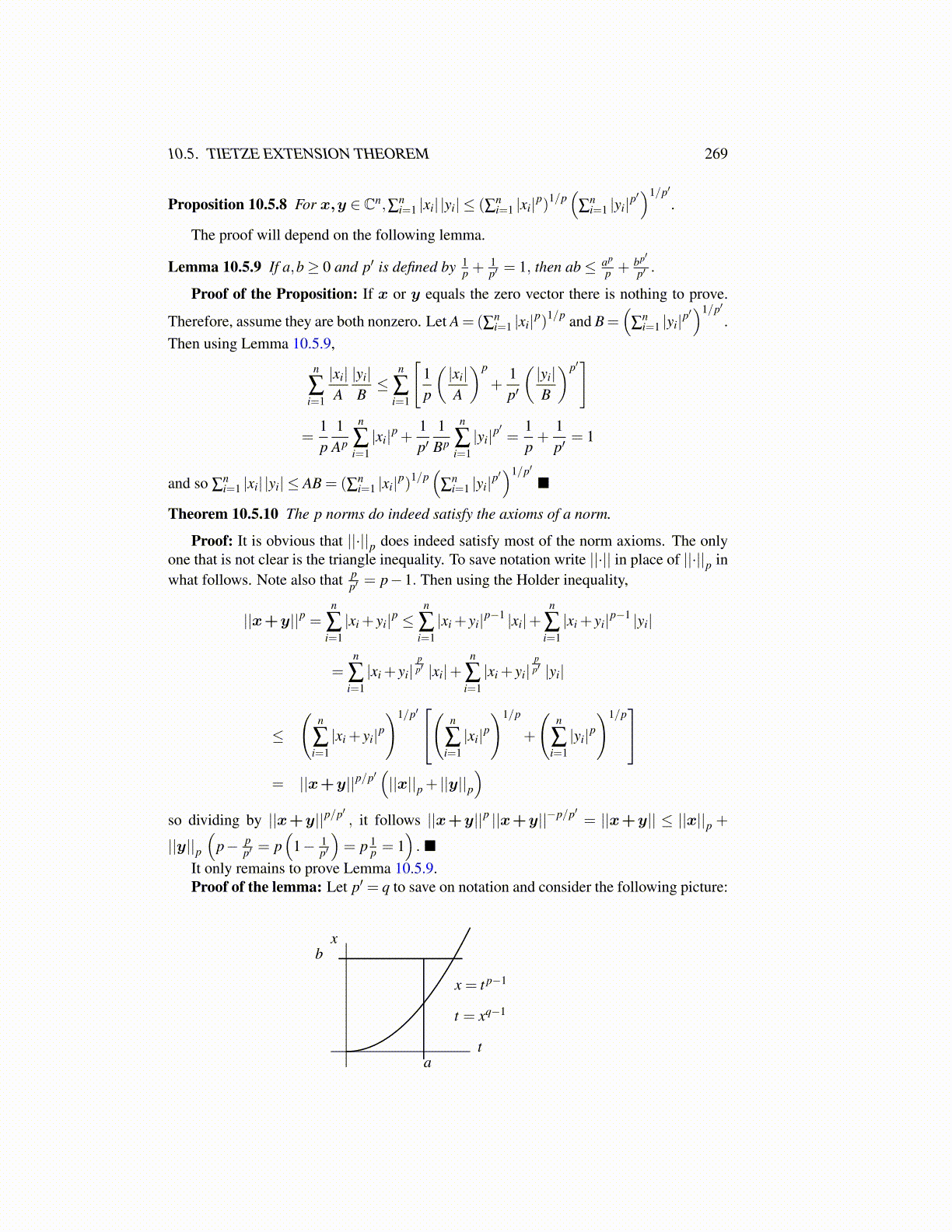
10.5. TIETZE EXTENSION THEOREM 269
Proposition 10.5.8 For x,y ∈ Cn,∑ni=1 |xi| |yi| ≤ (∑n
i=1 |xi|p)1/p(
∑ni=1 |yi|p
′)1/p′
.
The proof will depend on the following lemma.
Lemma 10.5.9 If a,b≥ 0 and p′ is defined by 1p +
1p′ = 1, then ab≤ ap
p + bp′
p′ .
Proof of the Proposition: If x or y equals the zero vector there is nothing to prove.
Therefore, assume they are both nonzero. Let A= (∑ni=1 |xi|p)1/p and B=
(∑
ni=1 |yi|p
′)1/p′
.Then using Lemma 10.5.9,
n
∑i=1
|xi|A|yi|B≤
n
∑i=1
[1p
(|xi|A
)p
+1p′
(|yi|B
)p′]
=1p
1Ap
n
∑i=1|xi|p +
1p′
1Bp
n
∑i=1|yi|p
′=
1p+
1p′
= 1
and so ∑ni=1 |xi| |yi| ≤ AB = (∑n
i=1 |xi|p)1/p(
∑ni=1 |yi|p
′)1/p′
■
Theorem 10.5.10 The p norms do indeed satisfy the axioms of a norm.
Proof: It is obvious that ||·||p does indeed satisfy most of the norm axioms. The onlyone that is not clear is the triangle inequality. To save notation write ||·|| in place of ||·||p inwhat follows. Note also that p
p′ = p−1. Then using the Holder inequality,
||x+y||p =n
∑i=1|xi + yi|p ≤
n
∑i=1|xi + yi|p−1 |xi|+
n
∑i=1|xi + yi|p−1 |yi|
=n
∑i=1|xi + yi|
pp′ |xi|+
n
∑i=1|xi + yi|
pp′ |yi|
≤
(n
∑i=1|xi + yi|p
)1/p′( n
∑i=1|xi|p
)1/p
+
(n
∑i=1|yi|p
)1/p
= ||x+y||p/p′(||x||p + ||y||p
)so dividing by ||x+y||p/p′ , it follows ||x+y||p ||x+y||−p/p′ = ||x+y|| ≤ ||x||p +||y||p
(p− p
p′ = p(
1− 1p′
)= p 1
p = 1). ■
It only remains to prove Lemma 10.5.9.Proof of the lemma: Let p′ = q to save on notation and consider the following picture:
b
a
x
t
x = t p−1
t = xq−1